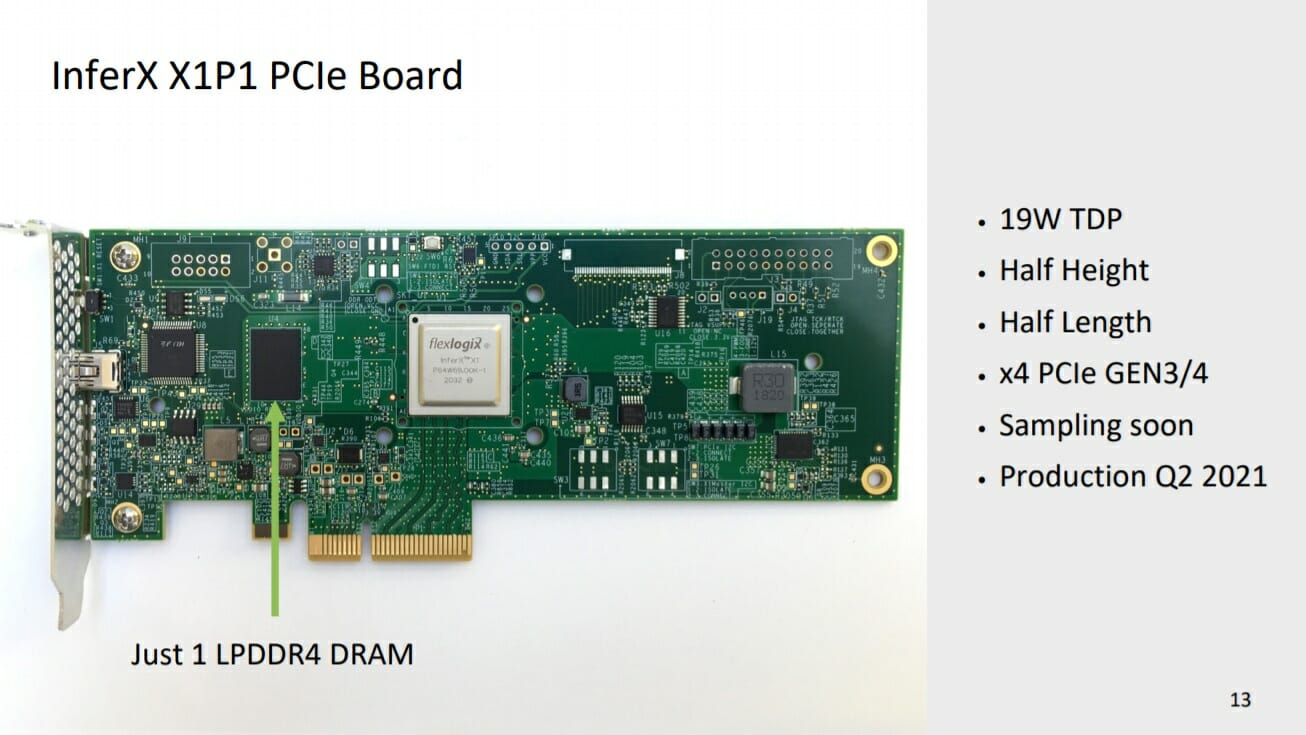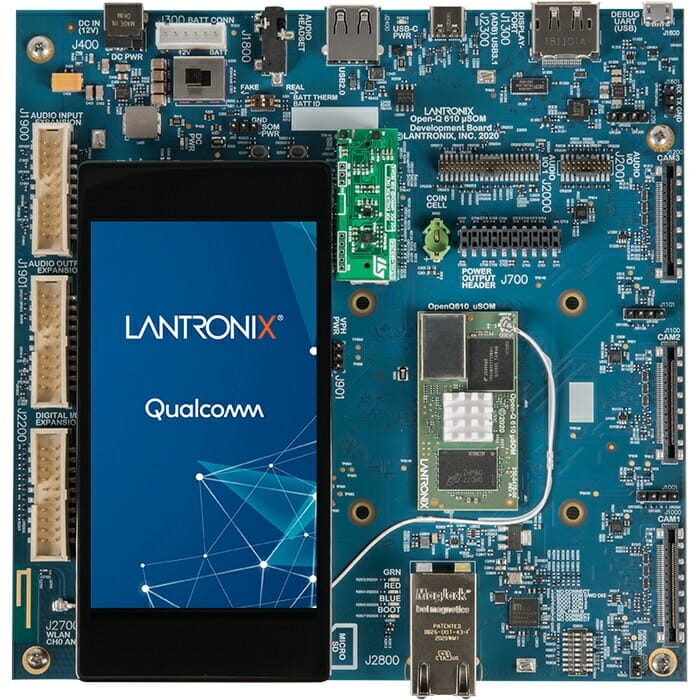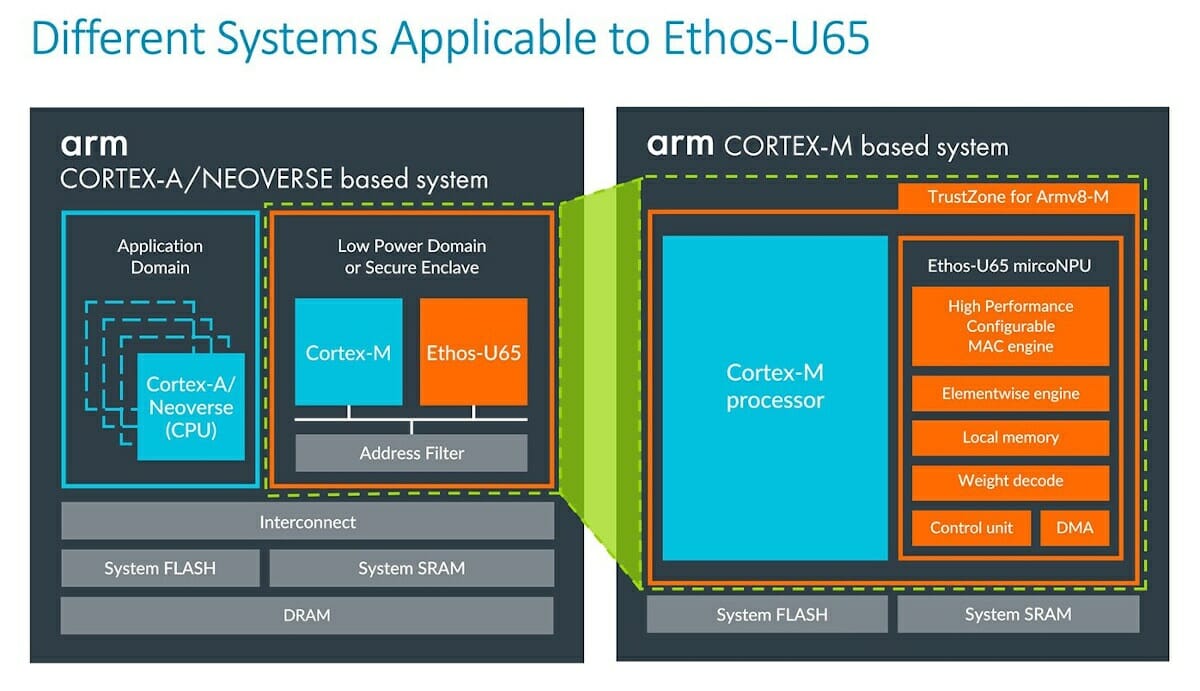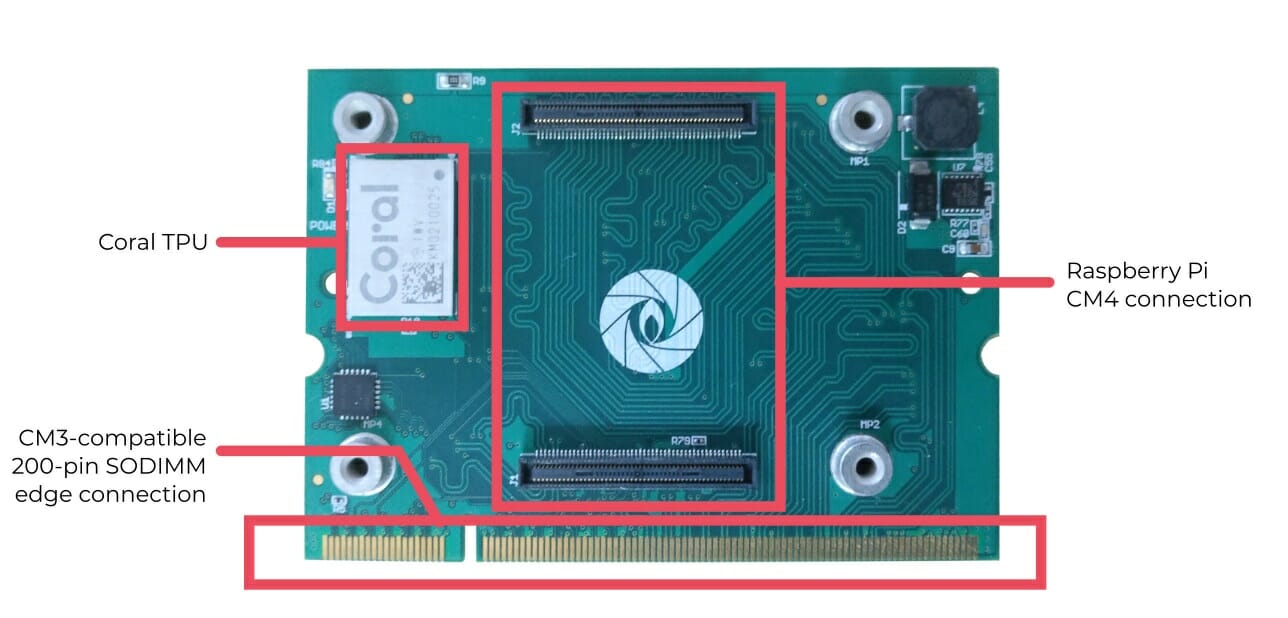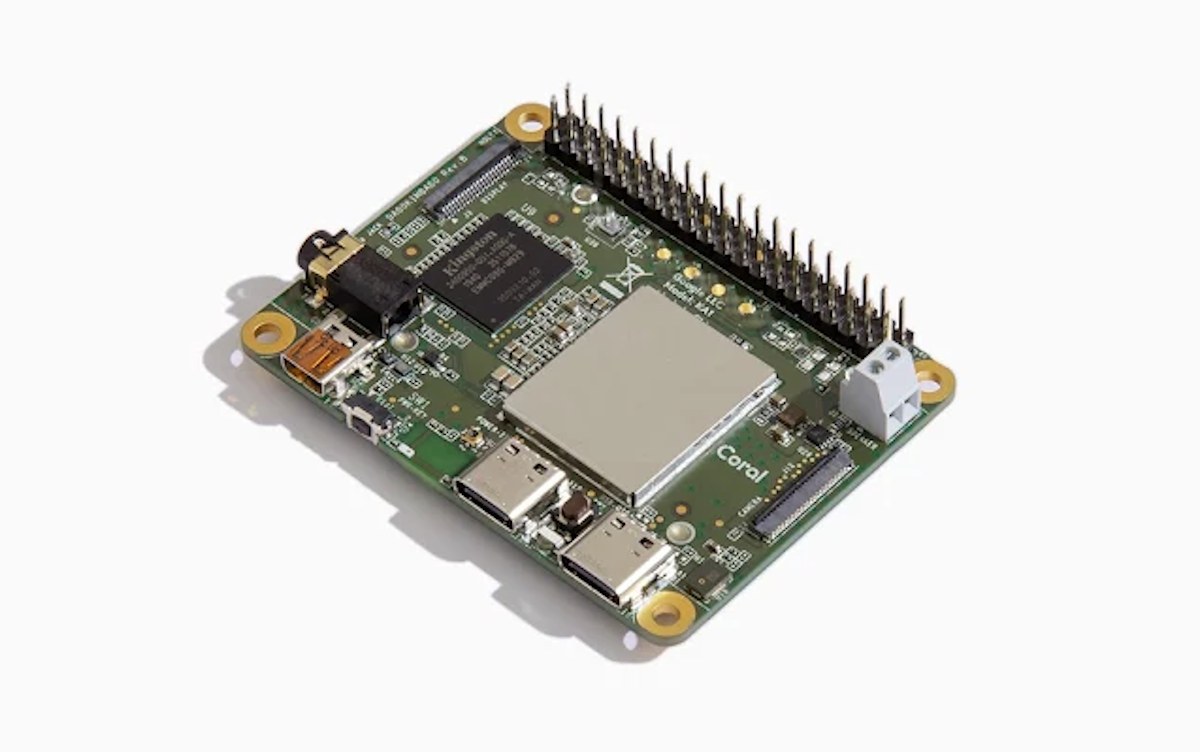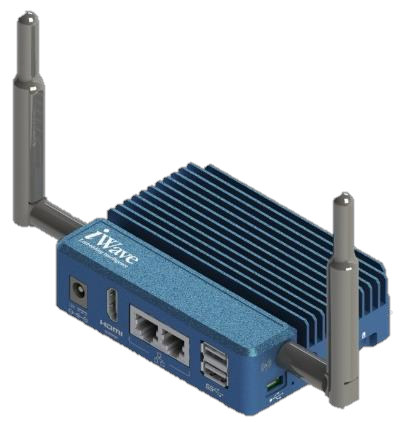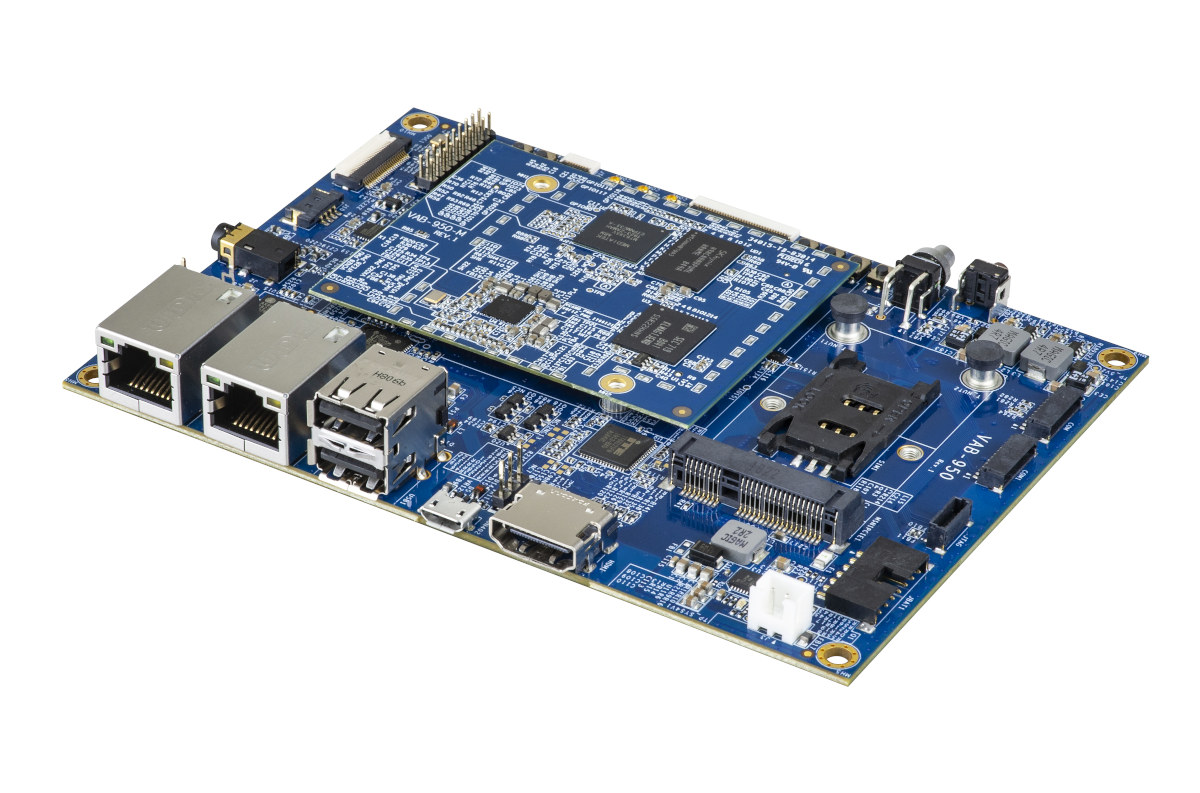Last week, Flex Logix announced the InferX X1 AI Inference Accelerator at Linley Fall Conference 2020. Today, they announced the InferX X1 SDK, PCIe board, and M.2 board. InferX X1 Edge Inference SDK The InferX Edge Inference SDK is simple and easy. The input to the compiler can be an open-source high-level, hardware-agnostic implementation of the neural network model that can be TensorFlow Lite or ONNX model. The compiler takes this model and looks for the available X1 resources and generates a binary executable file. This goes to the runtime which then takes the input stream, for example, a live feed from a camera. The user has to specify which compiler model, then the InferX X1 driver takes it and sends it to hardware. The binary file generated is fed to InferX X1 through the runtime. Then it takes the input data stream with a user-specified model and gives the […]
Qualcomm QCS610 micro SoM and devkit to power AI and ML smart cameras
Last July, we missed Qualcomm’s announcement of QCS410 and QCS610 processors designed to bring “premium camera technology, including powerful artificial intelligence and machine learning features formerly only available to high-end devices, into mid-tier camera segments”. The new SoC’s were recently brought to our attention by Lantronix as they have just introduced a new Open-Q 610 micro system-on-module (μSOM) based on Qualcomm QCS610 processor, as well as a development kit designed to bring such smart cameras to market. I first got a bit confused by the product name, but this goes without saying that it is completely unrelated to Qualcomm Snapdragon 610 announced over six years ago. Open-Q 610 micro system-on-module Open-Q 610 specifications: SoC – Qualcomm QCS610 CPU – Octa-core processor with 2x Kryo 460 Gold cores @ 2.2 GHz (Cortex-A76 class), and 6x Kryo 430 Silver low-power cores @ 1.8GHz (Cortex-A55 class) GPU – Qualcomm Adreno 612 GPU @ […]
Flex Logix InferX X1 AI Inference Accelerator Takes on NVIDIA Jetson Xavier NX
When it comes to AI inference accelerators, NVIDIA has captured the market as drones, intelligent high-resolution sensors, network video recorders, portable medical devices, and other industrial IoT systems use NVIDIA Jetson Xavier NX. This might change as Flex Logix’s InferX X1 AI inference accelerator has been shown to outperform Jetson Xavier NX as well as Tesla T4. During the Linley Fall Conference 2020, Flex Logix showcased InferX X1 AI Inference Accelerator, its performance, and how it outperformed other edge inference chips. It is the most powerful edge inference coprocessor with high throughput, low latency, high accuracy, large model megapixels images, and small die for embedded computing devices at the edge. The estimated worst-case TDP (933MHz, YOLOv3) is 13.5W. The coprocessor operates on the INT8 or BF16 precision over a batch size of 1 for minimum latency. The nnMAX Reconfigurable Tensor Processor accelerator engine exists in the edge inference coprocessor- InferX […]
Arm Ethos-U65 microNPU enables low-power AI inference on Cortex-A & Neoverse SoC’s
Arm introduced their very first microNPU (Micro Neural Processing Unit) for microcontrollers at the beginning of the year with Arm Ethos-U55 designed for Cortex-M microcontrollers such as Cortex-M55, and delivering 64 to 512 GOPS of AI inference performance or up to a 480x increase in ML performance over Cortex-M CPU inference. The company has now unveiled an update with Arm Ethos-U65 microNPU that maintains the efficiency of Ethos-U55 but enables neural network acceleration in higher performance embedded devices powered by Arm Cortex-A and Arm Neoverse SoCs. Arm Ethos-U65 delivers up to 1 TOPS, and as seen in the diagram enables features that can not be done with Ethos-U55 including object classification and real-time classification. Compared to Ethos-N78 NPU, the new microNPU offers less AI performance, but a significantly higher efficiency although AFAIK no quantified by Arm. The company says the development workflow remains the same with the use of the […]
Gumstix Introduces CM4 to CM3 Adapter, Carrier Boards for Raspberry Pi Compute Module 4
Raspberry Pi Trading has just launched 32 different models of Raspberry Pi CM4 and CM4Lite systems-on-module, as well as the “IO board” carrier board. But the company has also worked with third-parties, and Gumstix, an Altium company, has unveiled four different carrier boards for the Raspberry Pi Compute Module 4, as well as a convenient CM4 to CM3 adapter board that enables the use of Raspberry Pi CM4 on all/most carrier boards for the Compute Module 3/3+. Raspberry Pi CM4 Uprev & UprevAI CM3 adapter board Gumstix Raspberry Pi CM4 Uprev follows the Raspberry Pi Compute Module 3 form factor but includes two Hirose connectors for Computer Module 4. The signals are simply routed from the Hirose connectors to the 200-pin SODIMM edge connector used with CM3. Gumstix Raspberry Pi CM4 Uprev is the same except it adds a Google Coral accelerator module. Gumstix Raspberry Pi CM4 Development Board Specifications: […]
Google Coral Dev Board mini SBC is now available for $100
Google Coral SBC was the first development board with Google Edge TPU. The AI accelerator was combined with an NXP i.MX 8M quad-core Arm Cortex-A53 processor and 1GB RAM to provide an all-in-all AI edge computing platform. It launched for $175, and now still retails for $160 which may not be affordable to students and hobbyists. Google announced a new model called Coral Dev Board Mini last January, and the good news is that the board is now available for pre-order for just under $100 on Seeed Studio with shipping scheduled to start by the end of the month. Coral Dev Board Mini specifications haven’t changed much since the original announcement, but we know a few more details: SoC – MediaTek MT8167S quad-core Arm Cortex-A35 processor @ 1.3 GHz with Imagination PowerVR GE8300 GPU AI/ML accelerator – Google Edge TPU coprocessor with up to 4 TOPS as part of Coral […]
FPGA powered Corazon-AI gateway supports up to 8 IP cameras for video analytics
Earlier this year, we covered some video analytics solutions based on AAEON UP Xtreme Edge embedded computer combining an Intel Whiskey Lake processor with Intel Movidius Myriad X AI accelerator modules, as well as video management & analytics software solutions from Milestones & SAIMOS, or aotu.ai BrainFrame. iWave Systems has now introduced a similar solution with Corazon-AI gateway capable of handling up to 8 IP cameras in real-time, but instead of relying on AI accelerators, the company leverages Xilinx Zynq Ultrascale+ Arm Cortex-A53/R5 FPGA MPSoC for AI inference. Corazon-AI gateway specifications: SoC – Xilinz Zynq Ultrascale+ ZU2, ZU3, ZU4 or ZU5 MPSoC Processing System (PS) Quad/Dual Arm Cortex-A53 @ 1.5GHz, dual Cortex-R5 @ 600MHz Arm Mali-400MP2 GPU @ 677MHz H.264/H.265 Video Encoder/Decoder Programming Logic (PL) Up to 256K Logic cells PL GTH Transceivers x 4 @ 12.5 Gbps System Memory 64bit, 2GB DDR4 with ECC for PS (upgradable) 32bit, 1GB […]
VIA VAB-950 SBC Features MediaTek i500 SoC for AIoT Applications
While MediaTek is better known for their mobile SoCs and they also offers processors made for AIoT (AI + IoT) applications such as MediaTek i700, i500 or i300 SoCs. We only covered a few development / evaluation boards so far, with Pumpkin i500 SBC or Innocom SB30 EVK, but we’ve now got another one with VIA VAB-950 single board computer equipped with MediaTek i500 AIoT octa-core processor, up to 4GB LPDDR4, 16GB flash storage, HDMI, dual Fast Ethernet, dual-band 802.11ac Wi-Fi, Bluetooth 5.0, and support for 4G LTE cellular connectivity. VAB-950 SBC specifications: SOM-9X50 system-on-module SoC – MediaTek i500 octa-core processor with 4x Cortex-A73 @ 2.0GHz, 4x Cortex-A53 @ 2.0GHz Arm Mali-G72 GPU up to 800 MHz with support for OpenGL ES 3.0, OpenCL ES 1.1, and Vulkan 1.0 VPU for 1080p30 H.264/H.265 decoding 2x Cadence Tensilica Vision P6 DSPs System Memory – 2GB or 4GB LPDDR4 SDRAM Storage – […]


